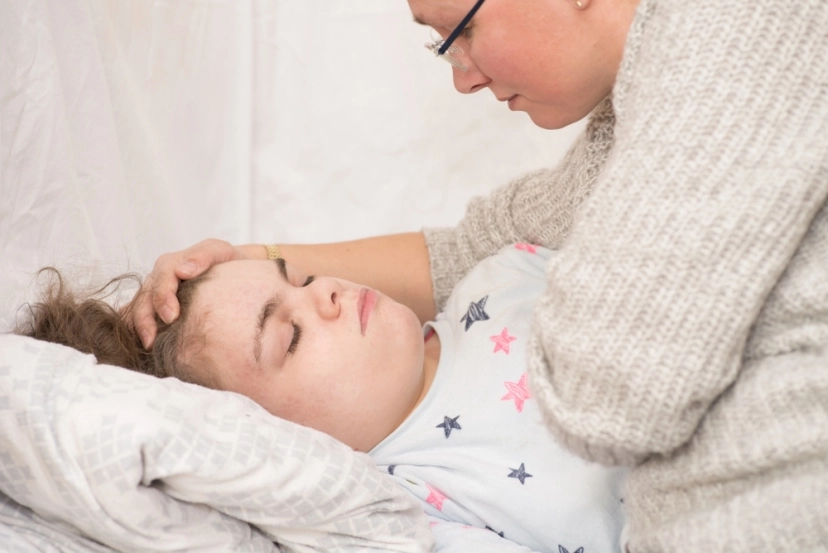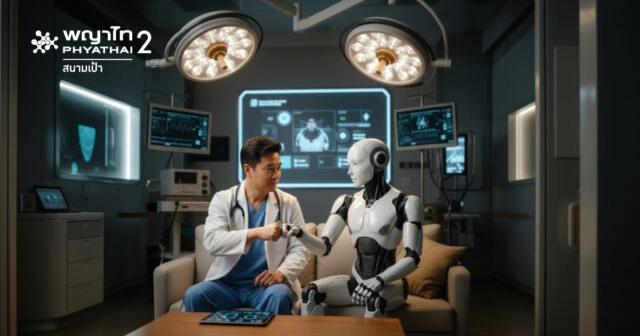Epilepsy in Children

Epilepsy is a neurological disorder that causes recurrent seizures not triggered by immediate external factors, such as high fever or head trauma. In children, seizures can manifest in various forms and stem from multiple causes. These episodes can significantly impact a child’s development and quality of life. Therefore, it is crucial for parents to understand the condition in order to manage it effectively, provide proper care, and prevent the symptoms from worsening.
What Is Epilepsy in Children?
Epilepsy is a group of brain disorders caused by abnormal electrical discharges in the brain, leading to recurrent seizures. The symptoms vary depending on the area of the brain affected. For example, a child may experience generalized convulsions, brief episodes of staring (absence seizures), or seizures that affect only specific parts of the body. In children, the manifestations can be more diverse than in adults due to the ongoing development of the brain.
Causes of Epilepsy in Children
Epilepsy in children is a condition resulting from abnormal functioning of brain cells, which leads to recurrent seizures or neurological disturbances. The causes can be categorized into several groups:
Genetic factors : Some children inherit abnormal genes that affect brain cell function and lead to seizures. A family history of epilepsy may also increase the risk.
Congenital abnormalities : These include brain malformations or structural abnormalities that occur in the womb. Such cases are often seen in children with genetic syndromes like West syndrome or Tuberous sclerosis.
Brain injuries : Severe head trauma or brain injury, such as lack of oxygen during birth or near-drowning incidents, can cause epilepsy.
Brain infections : Conditions such as meningitis, encephalitis, or parasitic infections (e.g., neurocysticercosis) may lead to epilepsy.
Other triggering factors : High fever, nutritional deficiencies (such as lack of vitamins), or exposure to certain toxins can also play a role. In some cases, the exact cause remains unknown—referred to as idiopathic epilepsy—which is also fairly common.
Common Seizure Symptoms in Children with Epilepsy
Generalized Tonic-Clonic Seizures : The child often loses consciousness suddenly, followed by body stiffening and rhythmic jerking of the arms and legs. There may also be tongue biting, breathing difficulty, bluish skin, or loss of bladder or bowel control. After the seizure, the child may feel fatigued, drowsy, or confused.
Absence Seizures : These are brief episodes where the child suddenly stops moving, appears to be staring blankly, and does not respond to sounds orbeing called. The episode typically lasts only a few seconds and then the child returns to normal. It may occur many times a day, potentially affecting learning and attention.
Focal Seizures : These seizures affect only a part of the body, such as jerking of one arm or leg, or numbness in a specific area. A child may experience unusual sensations, fear, or see and hear things that aren’t there. They may also exhibit brief, repetitive behaviors like lip-smacking, tugging at clothes, or walking in circles without being aware of it.
Myoclonic Seizures : These are sudden, quick muscle jerks that usually occur in the arms or legs. They may resemble a startle response but happen repeatedly and uncontrollably.
Nocturnal Seizures : These seizures occur during sleep and may involve body jerking, stiffening, or heavy breathing. They can be hard to detect because they happen at night, and the child may wake up feeling confused or unable to remember the event.
Warning Signs That Require Immediate Medical Attention
1.Seizures lasting longer than 5 minutes
2The child does not regain consciousness after the seizure ends
3.Multiple seizures occur consecutively without full recovery in between
4.The child has difficulty breathing, turns blue, or becomes unresponsive
5.It is the child’s first seizure and there is no prior history
6.The child sustains injuries during the seizure, such as head trauma, visible bruising, or suspected bone deformity
Proper first aid can significantly improve safety and reduce the risk of complications from seizures. Parents, caregivers, and teachers should be trained and prepared to respond appropriately in these situations.
Diagnosis of Epilepsy in Children
Diagnosing epilepsy involves a combination of thorough history-taking, physical examination, and specialized laboratory tests to determine the type of seizure and identify possible underlying causes. The main steps include:
Detailed history and physical examination : The doctor will ask specific questions about the seizure—where it starts in the body, how long it lasts, how often it occurs, whether the child loses consciousness, and the type of movements involved. Possible triggers will also be discussed, followed by a general physical examination.
Electroencephalogram (EEG) : This test detects abnormal brain wave activity and helps classify the type of epilepsy. It can identify abnormal patterns during or after a seizure. Sometimes flashing lights or rapid breathing are used to provoke the abnormal brain waves during the test.
Brain imaging (MRI or CT scan) : These scans are used to detect structural abnormalities in the brain, such as tumors, scarring, lesions, or congenital malformations. MRI typically provides more detailed images and is preferred in children suspected of having brain abnormalities.
Other tests : Blood tests or additional lab work may be done to investigate potential causes, such as infections or electrolyte imbalances.
Differential diagnosis : It’s important to distinguish epilepsy from other conditions that may mimic seizures, such as pseudoseizures, startle responses, or certain psychiatric disorders. This requires the expertise of a pediatric neurologist for accurate evaluation.
Treatment Options for Epilepsy in Children
Antiepileptic Drugs (AEDs) : Medication is the primary treatment for most children with epilepsy. These drugs help control seizures. The doctor will select the appropriate medication based on the type of seizures and the child’s weight. Medications must be taken consistently as prescribed. Some children may need long-term treatment, while others may be able to discontinue medication after a sustained period of seizure control—but only under medical supervision. Abruptly stopping medication without consulting a doctor is strongly discouraged.
Epilepsy Surgery : This option may be considered in cases of drug-resistant epilepsy—when seizures do not respond to medication. If a specific area of the brain causing the seizures can be identified and safely removed, surgery may be recommended. Examples include lesionectomy (removal of the affected brain tissue) or disconnective procedures to interrupt abnormal electrical circuits.
Vagus Nerve Stimulation (VNS) : Used when surgery is not an option and medications are ineffective. This involves implanting a small device under the skin in the chest, which sends electrical signals to the vagus nerve in the neck, helping to reduce seizure frequency.
Ketogenic Diet : A special high-fat, low-carbohydrate, moderate-protein diet that can reduce seizures in some children. This treatment must be closely monitored by healthcare professionals, including physicians and dietitians, to ensure safety and effectiveness.
Behavioral and Developmental Support : Some children with epilepsy may have developmental delays, learning difficulties, or behavioral issues. Comprehensive care may include physical therapy, speech therapy, emotional support, and educational interventions tailored to the child’s individual needs.
What to Do When a Child Has a Seizure
1.Stay calm Do not panic. Assess the situation and follow the appropriate steps.
2.Prevent injury Gently lay the child on their side to prevent choking. Do not place hard objects in the mouth. Use something soft—like a pillow or folded cloth—to cushion the head and clear the surrounding area to avoid head trauma.
3.Loosen clothing around the neck Unbutton shirts or remove ties to make breathing easier.
4.Do not give food or drink Avoid giving anything by mouth during a seizure, as it could lead to choking.
5.Observe seizure characteristics Note whether the child is stiffening or jerking on one side or the whole body, if there was a cry before losing consciousness, or if there are changes in eye movement, breathing, or skin color.
6.Time the seizure Record how long the seizure lasts. If it continues for more than 5 minutes, call an ambulance or take the child to the hospital immediately.
7. Post-seizure rest After the seizure, the child may feel drowsy, confused, or sleepy. Allow them to rest and continue to monitor their condition closely.
How to Prevent and Care for Children with Epilepsy
While epilepsy cannot always be completely prevented, proper care can significantly reduce the frequency of seizures, prevent injuries, and improve a child’s quality of life. The following are key recommendations for effective care and prevention:
Take medication consistently Ensure the child takes antiepileptic medication exactly as prescribed. Do not stop or switch medications abruptly without medical advice, as it may trigger seizures. Attend all follow-up appointments for blood tests, medication level checks, and monitoring of side effect
Avoid seizure triggers Ensure the child gets adequate rest—ideally 8–10 hours of sleep per night. Avoid stress, sleep deprivation, and prolonged screen time. Be cautious with flashing lights from video games, videos, or strobe lights, as these may provoke seizures in some children.
Create a safe environment Use padding on sharp furniture edges and avoid hard surfaces to minimize injury in case of a fall. Prevent high-risk activities such as climbing, swimming alone, or riding a bicycle on the street. Children should not be left alone in the bathroom or bathtub.
Maintain good nutrition and general health Provide a balanced diet suitable for the child’s age, ensure enough rest, and encourage moderate physical activity.
Inform teachers and caregivers If the child is of school age, notify teachers or caregivers about the condition. Ensure they are trained in basic first aid and know how to respond during a seizure.
Regular medical follow-up Continuously consult a pediatric neurologist for medication adjustments and to monitor the child’s condition as needed.
Support developmental needs If the child has developmental delays or other concerns, seek guidance from professionals such as developmental pediatricians, occupational therapists, or child psychologists.
Epilepsy in children may sound alarming, but with proper care, early and accurate diagnosis plays a crucial role.
In most cases, childhood epilepsy can be well managed with an appropriate and continuous treatment plan. Parents should observe their child’s symptoms closely,follow up on medical care, and provide emotional support with understanding. These efforts greatly contribute to the child’s ability to grow up with a good quality of life. If your child is showing signs that may indicate epilepsy or any concerning abnormal behaviors, it is recommended to seek evaluation by a pediatric neurologist at Phyathai 2 Hospital, where a team of specialists and state-of-the-art technology are ready to provide comprehensive and attentive care. This ensures the highest level of safety and accuracy in diagnosis and treatment.


